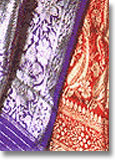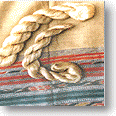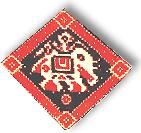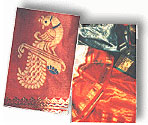Silk has been intermingled with the life and culture of the Indians. Though India is producing all the varieties of silk i.e., dress materials, scarves/stoles, readymade garments, etc., the silk sarees are unique. The saree is almost synonymous with the word silk. It is the traditional costume of Indian woman since time immemorial. There are innumerable references in Indian literature about this draped garment and the style of wearing differs from time to time, region to region and people to people. The silk sarees of India are among the living examples of the excellent craftsmanship of the weavers of the country.
The artistic and aesthetic sense of Indian weavers is not content with striking colours they choose for the fabrics, but lies in their mastery over the creation of floral designs, beautiful textures, fine geometry and the durability of such work. The weaver not only weaves with yarn but with intense feeling and emotion. In India, there are a number of silk weaving centers spread all over the country, known for their distinct and typical style and products. For Indians, particularly ladies, silk is lifeline - the elixir. Silk is always woven interwoven with way of life and culture of a region. Craftsmen all over the Indian sub-continent tried to master the weaving of sarees as exclusive as one can think of, putting motif designs, colours, pattern and versatility in them. No two sarees can be of same design left to the choice of weaver, thus there is innumerable pattern or diversity. Over the years, specific centres sprung and developed to promote a particular pattern of design / weaving and they became distinct. Some of the famous silk centers in India are as under:-
| Sl no | State | Silk Centre |
|---|---|---|
| 1 | Andhra | Dharmavaram, Pochampalli, Venkatagiri, Narainpet |
| 2 | Assam | Sualkuchi |
| 3 | Bihar | Bhagalpur |
| 4 | Gujarat | Surat, Cambay |
| 5 | Jammu & Kashmir | Srinagar |
| 6 | Karnataka | Bangalore, Anekal, Ilkal, Molakalmuru, Melkote, Kollegal |
| 7 | Chattisgarh | Champa, Chanderi, Raigarh |
| 8 | Maharashtra | Paithan |
| 9 | Tamil Nadu | Kanchipuram, Arni, Salem, Kumbhakonam, Tanjavur |
| 10 | Uttar Pradesh | Varanasi |
| 11 | West Bengal | Bishnupur, Murshidabad, Birbhum |
The Brocades of Banaras
 Situated on the banks of the holy river Ganges, Varanasi is famous for its finest silk sarees and brocades. These sarees are known for rich and intricately woven motifs of leaf, flowers, fruits, birds, etc. on a soft colour background. They are enriched with intricate borders and heavily decorated pallus. The centre is also known for its gauzi silver and gold tissues, which are ultra light in weight and delicate. The kinkab of Banaras is legendary. It is a glittering weave of gold and silver threads. The pure silk with a touch of gold is called bafta and the finely woven brocade of variegated silk is known as Amru.
Situated on the banks of the holy river Ganges, Varanasi is famous for its finest silk sarees and brocades. These sarees are known for rich and intricately woven motifs of leaf, flowers, fruits, birds, etc. on a soft colour background. They are enriched with intricate borders and heavily decorated pallus. The centre is also known for its gauzi silver and gold tissues, which are ultra light in weight and delicate. The kinkab of Banaras is legendary. It is a glittering weave of gold and silver threads. The pure silk with a touch of gold is called bafta and the finely woven brocade of variegated silk is known as Amru.
The tricks of tie and dye
 The resist dyeing techniques has been practiced in India since centuries. There are two distinct traditions in this technique. The patola or ikat technique involves the dyeing of the tie-resist yarn. The bandhej or bandhini involves the dyeing of the fabric.
The resist dyeing techniques has been practiced in India since centuries. There are two distinct traditions in this technique. The patola or ikat technique involves the dyeing of the tie-resist yarn. The bandhej or bandhini involves the dyeing of the fabric.
The ikats of Orissa
The tie and dye weaves of Orissa known as ikats employ the yarn resist method for both warp and weft with diffused effect. But the overall pattern is boldly articulated as in confident strikes of a brush. Both mulberry and tasar silks are used in the weaving of these ikats
The Patolas of Gujarat
 The patolas are known for their precision subtlety and beauty. Here, both warp and weft are dyed by dye resist method in a range of five or six traditional colours like red, indigo, blue, emerald green, black or yellow. The exact and highly skilled process ensures that when the fabric is woven, the design will appear precisely and create a magnificently coloured and figured ground of great richness and beauty with birds, flowers, animals, dancers, etc. in a geometrically stylized perfection.
The patolas are known for their precision subtlety and beauty. Here, both warp and weft are dyed by dye resist method in a range of five or six traditional colours like red, indigo, blue, emerald green, black or yellow. The exact and highly skilled process ensures that when the fabric is woven, the design will appear precisely and create a magnificently coloured and figured ground of great richness and beauty with birds, flowers, animals, dancers, etc. in a geometrically stylized perfection.
The ballet of bandhej
In bandhej or bandhini, the finely woven fabric is knotted tightly and dyed to achieve a distinct design. The sarees, odhnis (veils) and turbans of these regions are a medley of brilliant colours. The bandhini of Kutch is unmatched for their fineness of the minutely tied knots, the magnificence of the colours and the perfect designs.
The Tanchois of Gujarat
The tanchoi brocade was named after the three Parsi brothers called choi who learnt this art in China and introduced it to Surat. The choi brocade is usually a dark satin weave, purple or dark red in ground colour, embellished with motifs of flowers, creepers, birds all over design.
The temple silks of the South
 South India is the leading silk producing area of the country also known for its famous silk weaving enclaves like Kancheepuram, Dharmavaram, Arni, etc. While the temple towns like Kancheepuram are renowned for their magnificent heavy silk sarees of bright colours with silver or gold zari works, the centers like Bangalore and Mysore are known for their excellent printed silks.
South India is the leading silk producing area of the country also known for its famous silk weaving enclaves like Kancheepuram, Dharmavaram, Arni, etc. While the temple towns like Kancheepuram are renowned for their magnificent heavy silk sarees of bright colours with silver or gold zari works, the centers like Bangalore and Mysore are known for their excellent printed silks.
The traditional handloom silks always score over the powerloom silks in the richness of their textures and designs, in their individuality, character and classic beauty. Handloom weaving remains a symbol of versatility and creativity of living craft. Today, Indian silks, especially the handloom products, remain the most beautiful and cherished the world over.






